 A letter of credit is a bank undertaking of payment separate from the sales or other contracts on which it is based. It is a way of reducing the payment risks associated with the movement of goods.
A letter of credit is a bank undertaking of payment separate from the sales or other contracts on which it is based. It is a way of reducing the payment risks associated with the movement of goods.
Expressed more fully, it is a written undertaking by a bank (issuing bank) given to the seller (beneficiary) at the request, and following the buyer’s (applicant) instructions to effect payment — that is by making a payment, or by accepting or negotiating bills of exchange (drafts) — up to a stated amount, against stipulated documents and within a prescribed time limit.
Characteristics of Letter of Credit
Among the instrument used in international business, L/C has been distinguished by the following characteristics;
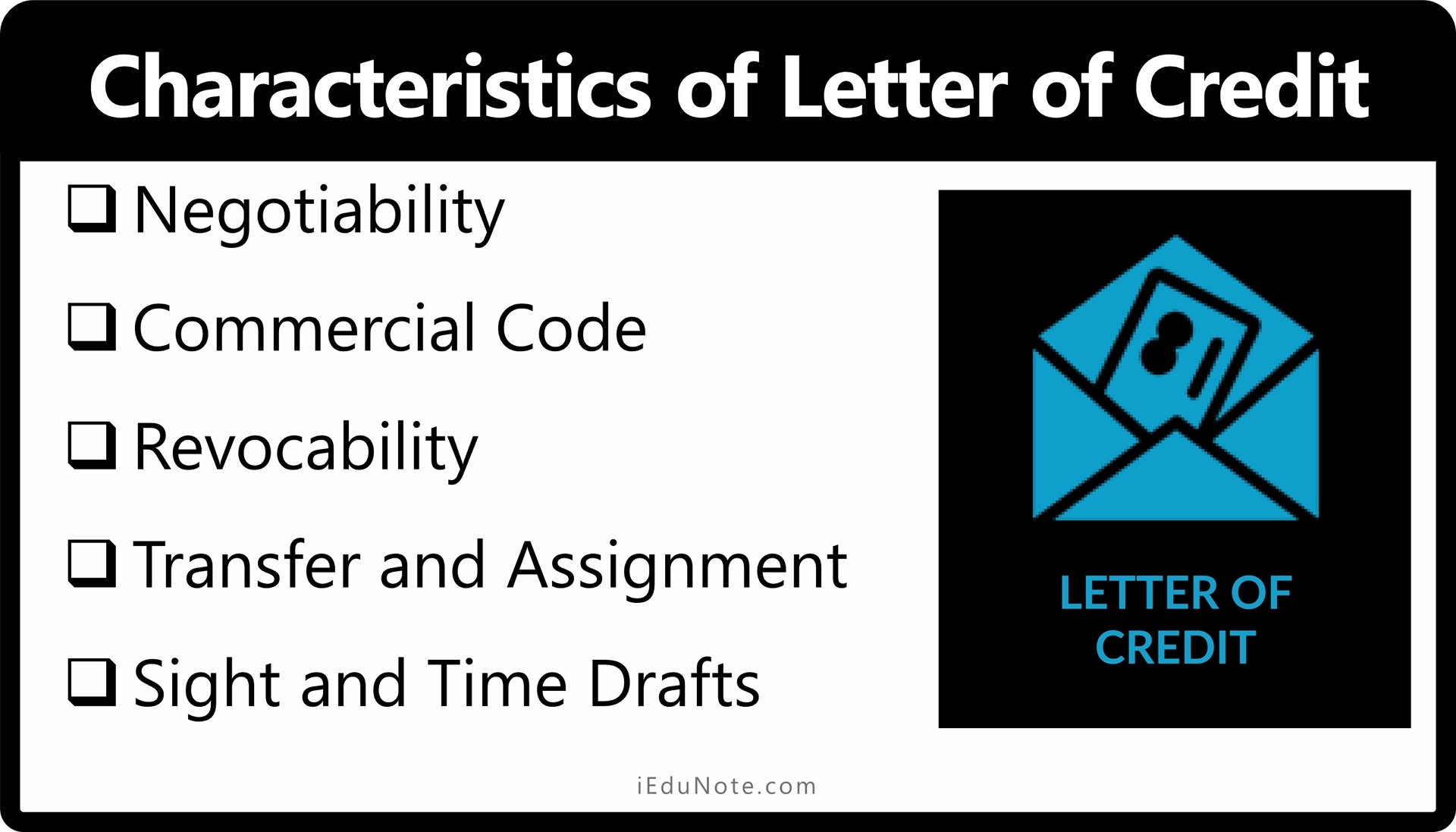
-
Negotiability
Letters of credit are usually negotiable. The issuing bank is obligated to pay not only the beneficiary but also any bank nominated by the beneficiary.
Negotiable instruments are passed freely from one party to another almost in the same way as money.
To be negotiable, the letter of credit must include an unconditional promise to pay on demand or at a definite time. The nominated bank becomes a holder in due course.
As a holder in due course, the holder takes the letter of credit for value; in good faith; and without notice of any claims against it. A holder in due course is treated favorably under the Uniform
-
Commercial Code
The transaction is considered a straight negotiation if the issuing bank’s payment obligation extends only to the beneficiary of the credit.
If a letter of credit is a straight negotiation it is referenced on its face by “we engage with you” or “available with ourselves. Under these conditions, the promise does not pass to a purchaser of the draft as a holder in due course.
-
Revocability
Letters of credit may be either revocable or irrevocable. Whether revocable or irrevocable, it will state on the face of the document what type of credit is being presented.
A revocable letter of credit may be revoked or modified for any reason, at any time by the issuing bank without notification. A revocable letter of credit cannot be confirmed.
If a correspondent bank is engaged in a transaction that involves a revocable letter of credit, it serves only as of the advising bank.
Once the documents have been presented and meet the terms and conditions in the letter of credit, and the draft is honored, the letter of credit cannot be revoked.
The revocable letter of credit is not commonly used. It is generally used to provide guidelines for shipment.
The most commonly used irrevocable letter of credit may not be revoked or amended without the agreement of the issuing bank; the confirming bank; and the seller (beneficiary).
An irrevocable letter of credit from the issuing bank insures the seller that if the required documents are presented and the terms and conditions are complied with, payment will be made.
-
Transfer and Assignment
The seller has the right to transfer or assign the right to draw, under a letter of credit only when the letter of credit states that it is transferable or assignable.
Letters of credit governed by the Uniform Commercial Code (Domestic) may be transferred an unlimited number of times. Under the Uniform Customs
Practice for Documentary Credits (International) the credit may be transferred only once.
However, even if the credit specifies that it is nontransferable or non-assignable, the seller may transfer their rights before a performance.
-
Sight and Time Drafts
All letters of credit require the seller to present a draft and specified documents to receive payment.
A draft is a written order by which the party creating it, orders another party to pay money to a third party. A draft is sometimes referred to as a bill of exchange.
The two types of drafts used in letters of credit are sight and time. A sight draft is payable as soon as it is presented for payment although the issuing bank is allowed a reasonable time to review the documents before making payment.
A time draft is not payable until the lapse of a particular period stated on the draft (often 90 days). The issuing bank is required to accept the draft as soon as the documents comply with the letter of credit terms.
The issuing bank is then obligated to pay the draft at maturity.
Types of Letters of Credit
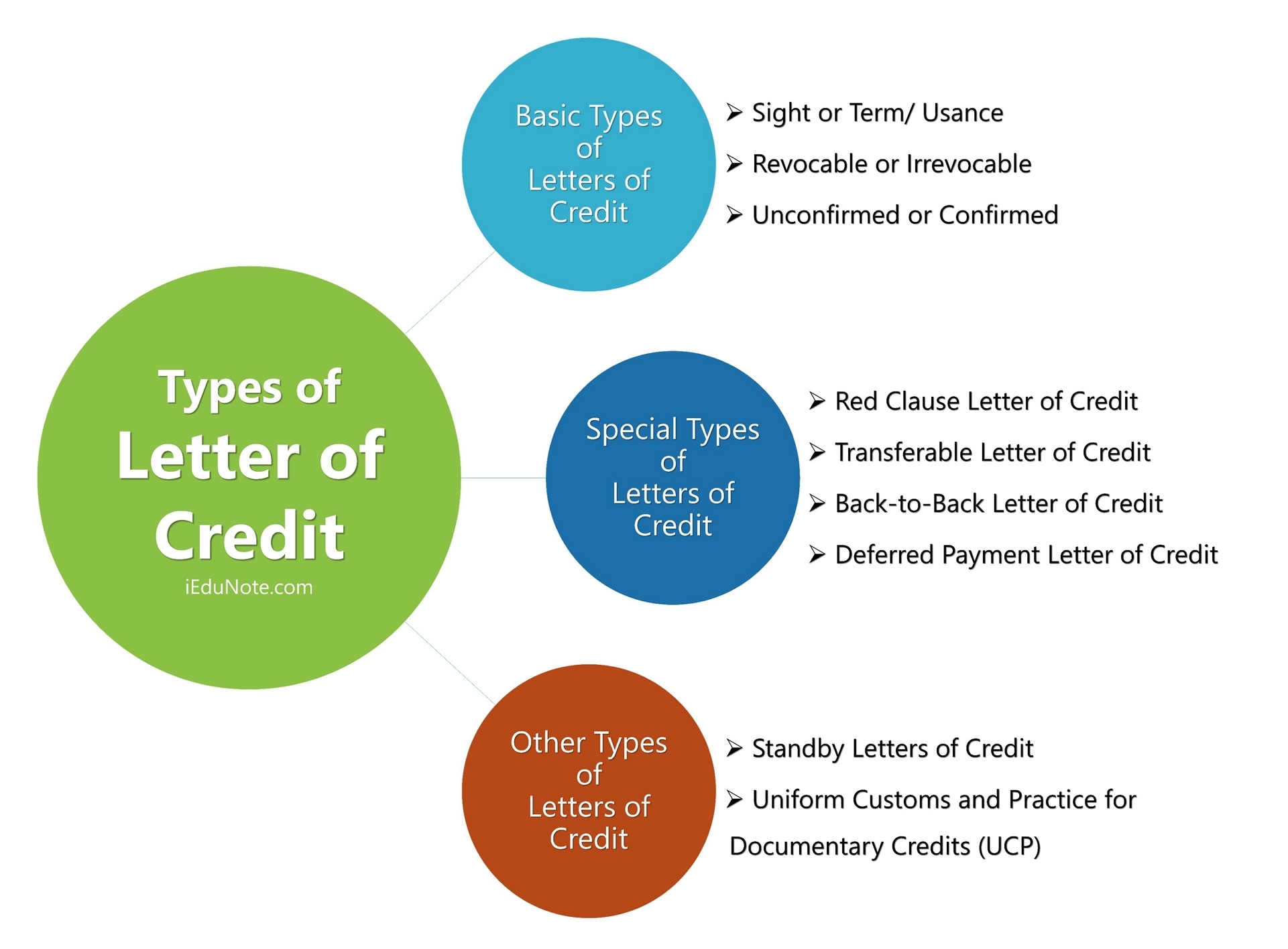
Basic Types of Letters of Credit
There are three basic features of letters of credit, each of which has two options. These are described below. Each letter of credit has a combination of each of the three features.
-
Sight or Term/ Usance
Letters of credit can permit the beneficiary to be paid immediately upon presentation of specified documents (sight letter of credit), or at a future date as established in the sales contract (term/usance letter of credit).
-
Revocable or Irrevocable
Letters of credit can be revocable. This means that they can be canceled or amended at any time by the issuing bank without notice to the beneficiary.
However, drawings negotiated before notice of cancellation or amendment must be honored by the issuing bank. An irrevocable letter of credit cannot be canceled without the consent of the beneficiary.
-
Unconfirmed or Confirmed
An unconfirmed letter of credit carries the obligation of the issuing bank to honor all drawings, provided that the terms and conditions of the letter of credit have been complied with.
A confirmed letter of credit also carries the obligation of another bank which is normally located in the beneficiary’s country, thereby giving the beneficiary the comfort of dealing with a bank known to him.
Special Types of Letters of Credit
So far a description has been provided of the basic types of letters of credit used to cover the shipment of goods.
In addition to these basic types, various specialized formats meet particular sets of circumstances.
-
Red Clause Letter of Credit
A red clause letter of credit incorporates a clause, traditionally written in red, which authorizes the bank acting as the negotiating or paying bank to pay the beneficiary in advance of shipment.
This enables the purchase and accumulation of goods from several different suppliers, and the arrangement of shipment under the letter of credit terms.
Such advances will be deducted from the amount due to be paid when the documents called for are presented under the letter of credit.
If the beneficiary fails to ship the goods or cannot do so before the expiry of the Letter of credit, the issuing bank is bound to reimburse the negotiating or paying bank, recovering its payment from the applicant.
Variations of such credits may also require that any advances be secured by temporary warehouse receipts until shipment is effected.
Beneficiaries of red clause letters of credit are invariably brokers/agents of buyers in a particular field.
-
Transferable Letter of Credit
A transferable letter of credit allows the beneficiary to act as a middleman and transfer his rights under a letter of credit to another party or parties who may be suppliers of the goods.
Depending on whether the letter of credit permits partial shipments, fractional amounts may be transferred to more than one beneficiary.
The letter of credit, however, can be transferred only once: the secondary beneficiaries cannot transfer their rights to a third party.
Transfer of a letter of credit can be made on specific application by the original beneficiary to the authorized transferring bank
To be transferable, a letter of credit must be so marked by the issuing bank which can only do so on the applicant’s specific instructions.
The applicant should be aware that any second beneficiary, the probable supplier, is usually a party not likely known to the applicant.
The terms and conditions of the transferred letter of credit must be identical to those of the original letter of credit with the following exceptions:
- The original beneficiary may be shown as the applicant on the transferred credit.
- The amount of the letter of predict, and unit prices if any, maybe less than in the original letter of credit (The difference being the original beneficiary’s profit margin).
- The latest shipment date, if any, and expiry date as shown on the original letter of credit should be shortened.
- The percentage of insurance coverage, if any, should be increased to satisfy the requirements of the original letter of credit.
- When a drawing takes place, the original beneficiary normally substitutes his invoices for those of the second beneficiary for up to the amount and unit prices available under the original letter of credit and draws the difference as profit.
-
Back-to-Back Letter of Credit
Although not recorded on a letter of credit, “back-to-back” is a term used in transactions involving two irrevocable letters of credit.
Such transactions originate when a seller receives a letter of credit covering goods which must be obtained from a third party that in turn requires a letter of credit. The “second” issuing bank looks to the first issuing bank for reimbursement after paying under the second letter of credit.
The difference between back-to-back letters of credit and transferable letters of credit is such that in a transferable letter of credit, the rights under the existing letter of credit are transferred.
In a back-to-back transaction, different letters of credit are issued. Because technical problems can arise in back-to-back transactions, banks tend to discourage their use.
-
Deferred Payment Letter of Credit
Under a deferred payment letter of credit, the applicant does not pay until a future date determined under the terms of the letter of credit.
No drafts are called for, which avoids “stamp duties” charged by some countries on bills of exchange (drafts).
One reason an exporter might extend credit terms to an importer could be the competitiveness of the market and the need for the exporter to finance the importer if the exporter is to make the sale.
Other Types of Letters of Credit
The letters of credit described thus far cover the movement of goods from one destination to another. There are other types of letters of credit that are not specifically related to the movement of goods.
-
Standby Letters of Credit
Standby letters of credit may apply in general to transactions that are based on the concept of default by the applicant in the performance of a contract or obligation. In the event of default, the beneficiary is permitted to draw under the letter of credit.
Standby letters of credit may be used as a substitute for performance guarantees or issued to guarantee loans granted by one firm to another, thereby securing payment to the creditor in the event the other party fails to repay its obligation on the due date.
Even if the applicant claims to have performed, the bank issuing the letter of credit is obliged to make payment provided the beneficiary produces complying documents, usually a sight draft, and a written demand for payment.
-
Uniform Customs and Practice for Documentary Credits (UCP)
The Uniform Customs and Practice for Documentary Credits is an internationally agreed-upon set of rules for all parties involved in all types, of letters of credit transactions. The rules, which were adopted by the International Chamber of Commerce in Vienna in 1933, have been revised several times and are used by banks in practically all countries.
The Uniform Customs and Practice for Documentary Credits, currently applicable, is a set of rules which, when not in contravention of local laws, are binding on the parties who have adopted them.
The authority of UCP lies in its universal acceptance which is acknowledged by a statement on the letter of credit itself. All Scotia banks’ Documentary Letters of Credit are issued subject to UCP.
Copies of the Uniform Customs and Practice for Documentary Credits are available upon request from your nearest Scotia bank office.
Importance and Need for Letter of Credit (L/C)
The need for a letter of credit is a consideration in the course of negotiations between the buyer and seller when the important matter of method of payment is being discussed.
Payment can be made in several different ways:
- by the buyer remitting cash with his order
- by open account whereby the buyer remits payment at an agreed time after receiving the goods;
- by documentary collection through a bank in which case the buyer pays the collecting bank for account of the seller in exchange for shipping documents which would include, in most cases, the document of title to the goods.
In the aforementioned methods of payment, the seller relies entirely on the willingness and ability of the buyer to effect payment.
When the seller has doubts about the credit-worthiness of the buyer and wishes to ensure prompt payment, the seller can insist that the sales contract provides for payment by irrevocable letter of credit.
Furthermore, if the bank issuing the letter of credit (issuing bank) is unknown to the seller or if the seller is shipping to a foreign country and is uncertain of the issuing bank’s ability to honor its obligation, the seller can, with the approval of the issuing bank, request its bank — or a bank of international repute to assume the risk of the issuing bank by confirming the letter of credit.
Benefits of a Letter of Credit
Benefits of a Letter of Credit To The Exporter/Seller
- Letters of credit open doors to international trade by providing a secure mechanism for payment upon fulfillment of contractual obligations.
- A bank is substituted for the buyer as the source of payment for goods or services exported.
- The issuing bank undertakes to make the payment, provided all the terms and conditions stipulated in the letter of credit are complied with.
- Financing opportunities, such as pre-shipment finance secured by a letter of credit and/or discounting of accepted drafts drawn under letters of credit, are available in many countries.
- Bank expertise is made available to help complete trade transactions successfully.
- Payment for the goods shipped can be remitted to your bank or a bank of your choice.
Benefits of a Letter of Credit To the Importer/Buyer
- Payment will only be made to the seller when the terms and conditions of the letter of credit are complied with.
- The importer can control the shipping dates for the goods being purchased.
- Cash resources are not tied up.
Parties involved in a Letter of Credit Transaction
To help the reader understand the steps taken in a letter of credit transaction, the following is a brief description of the parties most commonly involved in letters of credit.

-
Accepting Bank
The bank named in a letter of credit on whom term drafts are drawn and who indicates acceptance of the draft by dating and signing across its face, thereby incurring a legal obligation to pay the amount of the draft at maturity.
-
Advising Bank
A branch or correspondent bank at or near the domicile of the beneficiary, to which the issuing bank either sends the letter of credit or a notification that a letter of credit has been issued, with instructions to notify the beneficiary.
The advising bank advises the beneficiary of the letter of credit without engagement.
-
Applicant
The buyer or the party who requests the letter of credit to be issued. Beneficiary The seller or the party to whom the letter of credit is addressed.
-
Confirming Bank
A bank usually in the country of the beneficiary which, at the request of the issuing bank, joins that bank in undertaking to honor drawings made by the beneficiary, provided the terms and conditions of the letter of credit have been complied with.
-
Discounting Bank
A bank that discounts a draft for the beneficiary after it has been accepted by an accepting bank.
-
Drawer Bank
The bank named in the letter of credit on which drafts aro to be drawn.
-
Drawer
The beneficiary of the letter of credit who will draw the draft under the terms of the letter of credit.
-
Issuing Bank
The bank opens a letter of credit on behalf of the applicant and forwards it to the advising bank for delivery to the beneficiary.
-
Negotiating Bank
Usually, the beneficiary’s bank which, after satisfying itself that the documents conform with the letter of credit, agrees to purchase the draft (pay the beneficiary).
-
Paying Bank
The bank named in the letter of credit where drafts are to be paid. It is not necessarily the issuing bank, but often a branch of the issuing bank or its correspondent.
Once drafts have been paid or accepted by the paying/ drawer bank, there is no recourse to the drawers.
-
Reimbursing Bank
The bank authorized by the issuing bank to reimburse the drawer bank or other banks submitting claims under the letter of credit.

Steps in an Import Letter of Credit Transaction
Step 1. The Sales Contract
The sales contract is the formal agreement between the buyer and seller specifying the terms of sale that both parties have agreed upon. The contract should include a description of the goods; the amount; the unit price; the terms of delivery; the time allowed for shipment and presentation of documents; the currency; and the method of payment.
Step 2. Application & Agreement
The bank’s letter of the credit application and agreement forms, when executed, constitute a payment and reimbursement contract between the issuing bank and its customer.
It is also the customer’s instruction to the issuing bank.
The letter of credit must be issued exactly under the customer’s instructions; therefore, the application must be completed fully and accurately, to avoid the inconvenience of having to have the letter of credit amended.
The agreement constitutes an undertaking by the customer to reimburse the issuing bank for drawings paid following the terms of the letter of credit, and normally takes the form of an authorization to debit the customer’s account.
Step 3. Issuance of the Letter of Credit
The issuing bank prepares the letter of credit as specified in the application and forwards it by transmission or airmail to the advising bank, (a branch or correspondent of the issuing bank).
The issuing bank instructs the advising bank as to whether or not to add its confirmation, as per their customer’s instructions.
Step 4. Advising
The advising bank forwards the letter of credit to the beneficiary (seller) stating that no commitment is conveyed on its part.
However, if the advising bank has been asked to confirm the letter of credit and agrees to do so, it will incorporate a clause undertaking to honor the beneficiary’s drafts, provided the documents evidence that all terms and conditions of the letter of credit have been complied with.
Steps in an Export Letter of Credit Transaction
Step 1. Shipment of Goods
Upon receiving the letter of credit, the beneficiary should examine it carefully and be satisfied that all the terms and conditions can be complied with.
If this is not possible, the beneficiary should request the applicant to arrange an amendment to the letter of credit. Once completely satisfied, the beneficiary will then be in a position to assemble and ship the goods.
Step 2. Presentation of Documents by Beneficiary
The beneficiary prepares an invoice in the number of copies required, with the description of goods shown exactly as stipulated in the letter of credit.
The beneficiary obtains the bill of lading and/or other transport documents from the carrier and prepares and/or obtains all other documents required by the letter of credit.
These are attached to the draft, drawn on the bank indicated and at the term stipulated in the letter of credit, and are presented to the advising/ confirming/ negotiating bank.
Step 3. Sending Documents to the Issuing Bank
The advising/confirming/negotiating bank checks the documents presented by the seller against the letter of credit. If the documents meet the requirements of the letter of credit, that bank will send them to the issuing bank, claiming reimbursement and paying the seller.
Step 4. Delivering Documents to the Applicant
The issuing bank will also check the documents for compliance and then deliver them to the applicant either against payment or as an undertaking to pay on the maturity of the drawing under the letter of credit.
Documents Usually Required Under a Letter of Credit
There is no limit to the number and variety of documents that letters of credit may stipulate.
The following is a list of documents most commonly seen in a letter of the credit transaction. Each document is described in brief with a check-list for preparing the document.
As already stated, the beneficiary should, on first being advised of the letter of credit, examine it carefully and be satisfied that all the documentary requirements can be complied with.
Unless the documentary requirements can be strictly complied with, the beneficiary may not receive payment from the issuing bank.
If any requirements cannot be complied with, the beneficiary should immediately request the applicant to arrange for an appropriate amendment to the letter of credit.

-
Draft
A draft is a bill of exchange and a legally enforceable instrument which may be regarded as the formal evidence of debt under a letter of credit. Drafts drawn at sight are payable by the drawee on presentation.
Term (usance) drafts, after acceptance by the drawee, are payable on their indicated due date.
-
Commercial Invoice
The commercial invoice is an itemized account issued by the beneficiary and addressed to the applicant, and must be supplied in the number of copies specified in the letter of credit.
-
Consular or Customs Invoice
A consular or customs invoice is prepared by the beneficiary on forms either supplied by the buyer or local consulate offices;
- Consular invoices must be visaed (officially stamped) and signed by a consular officer of the importing country and be supplied in the official form and number of copies as stipulated in the letter of credit.
- All headings of the forms must be completed.
- The value of goods required must agree with that shown on the commercial invoice.
-
Bill of Lading
A bill of lading is a receipt issued by a carrier for goods to be transported to a named destination, which details the terms and conditions of transit. In the case of goods shipped by sea, it is the document of title which controls the physical custody of the goods.
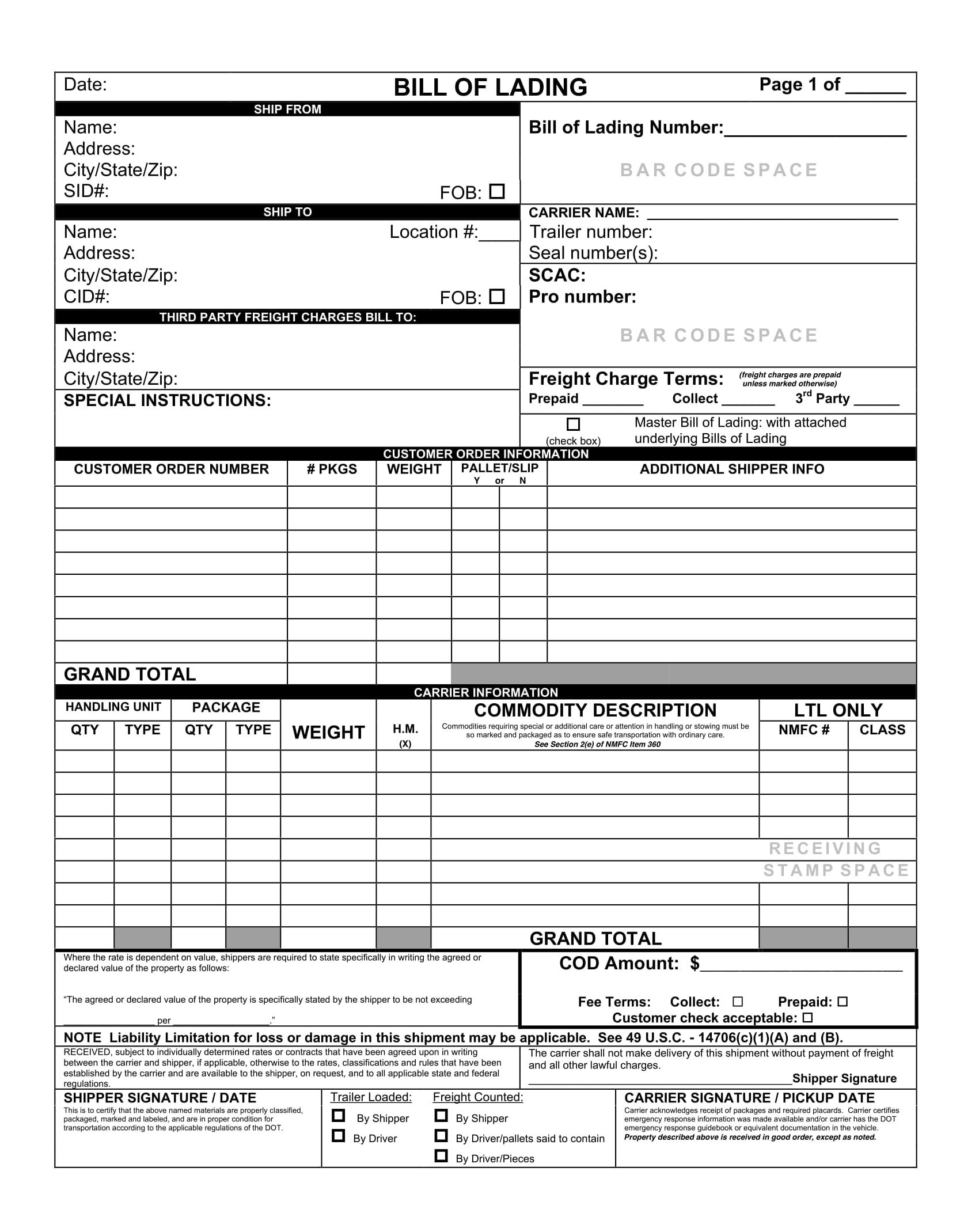
-
Air Waybill
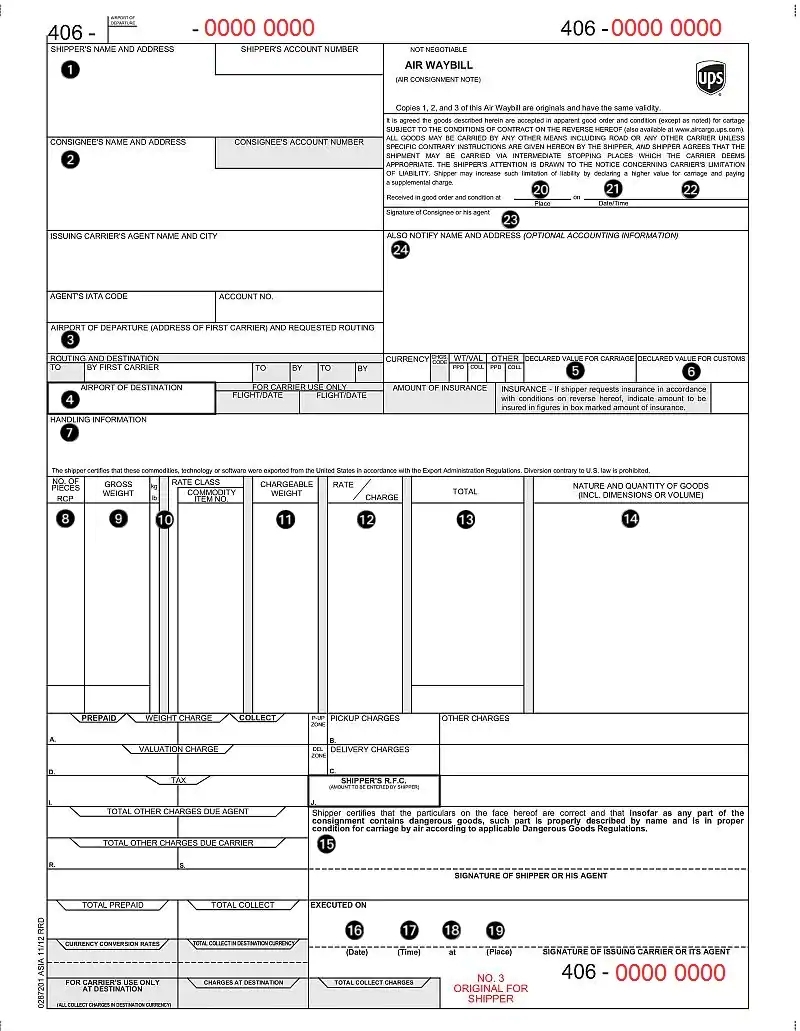
An air waybill is a receipt issued by an air carrier indicating receipt of goods to be transported by air and slowing goods consigned to a named party.
Being a non-negotiable receipt it is not a document of title.
-
Insurance Policy or Certificate
Under the terms of a CIF contract, the beneficiary is obliged to arrange insurance and furnish the buyer with the appropriate insurance policy or certificate.
The extent of coverage and risks should be agreed upon between the buyer and seller in their initial negotiations and be set out in the sales contract.
Since the topic of marine insurance is extremely specialized and with conditions varying from country to country, the services of a competent marine insurance broker are useful and well-advised.
-
Packing List
A packing list is usually requested by the buyer to assist in identifying the contents of each package or container. It must show the shipping marks and the number of each package. It is not usually required to be signed.
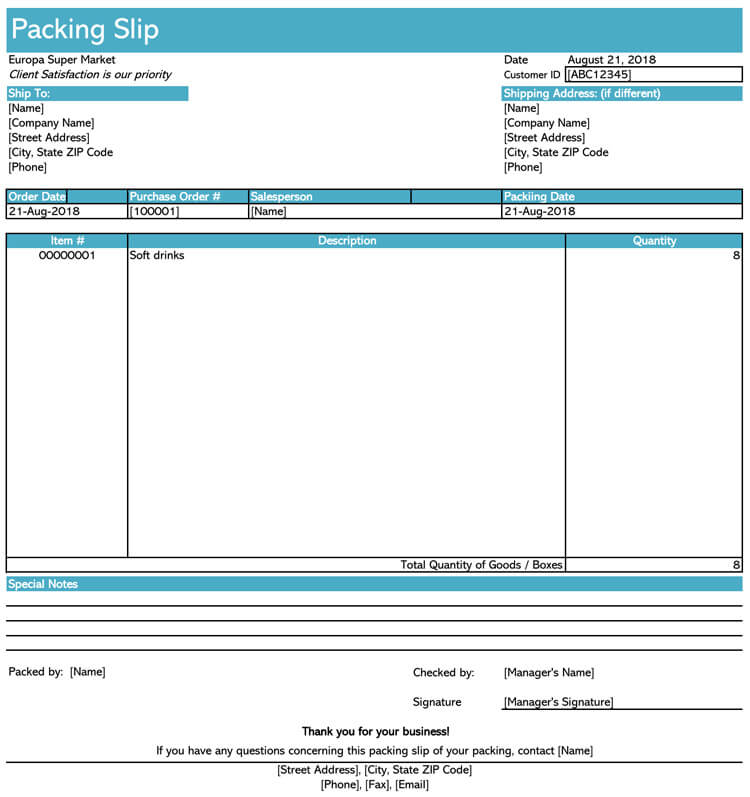
-
Certificate of Origin
As the name suggests, a certificate of origin certifies as to the country of origin of the goods described and should comply with any stipulations in the letter of credit as to originating country and by whom the certificate is to be issued.
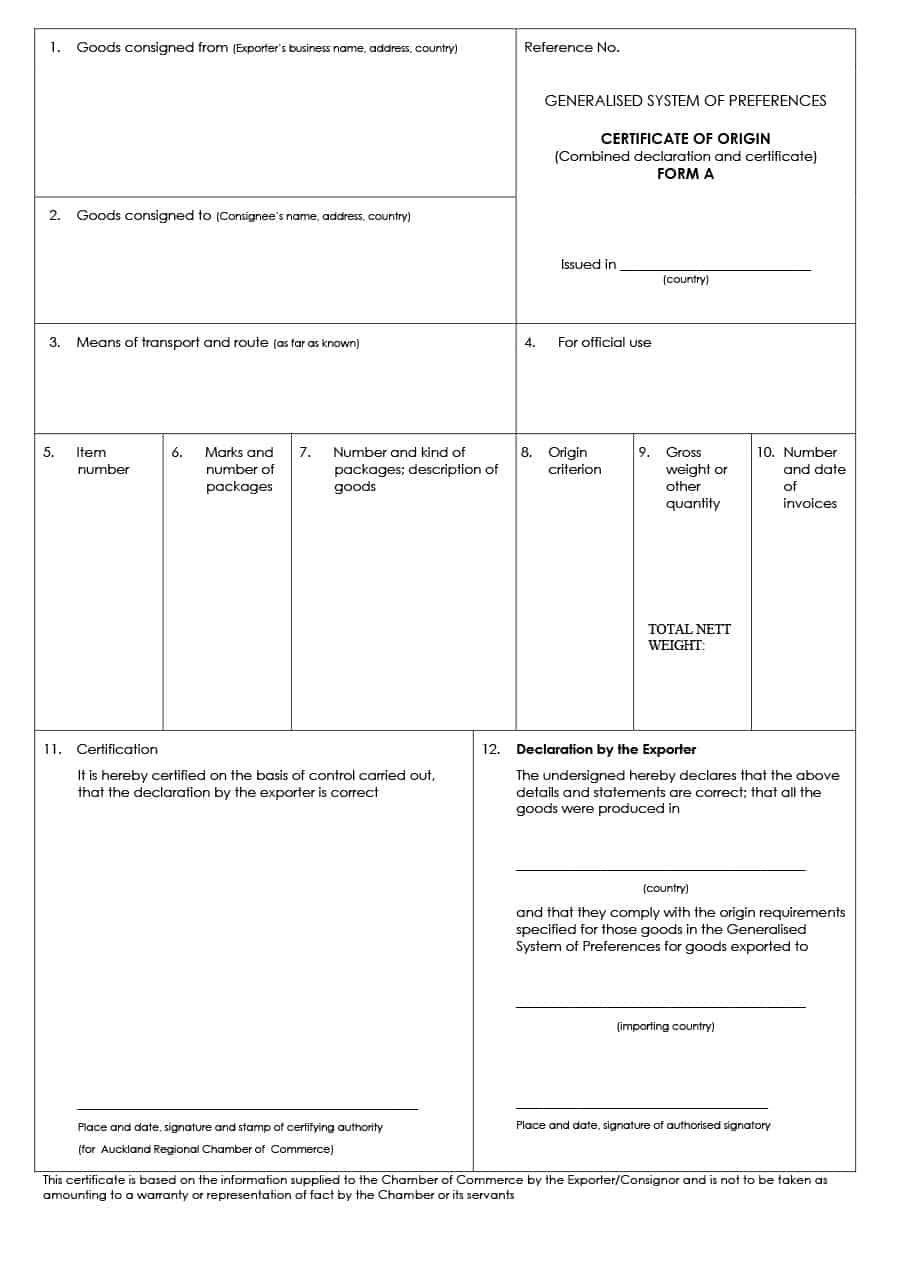
The certificate should be consistent with and identified with the other shipping documents by shipping marks and numbers and must be signed.
-
Inspection Certificate
When a letter of credit calls for an inspection certificate it will usually specify by whom the certificate is to be issued; otherwise, the same general comments as in the case of the certificate of origin apply.
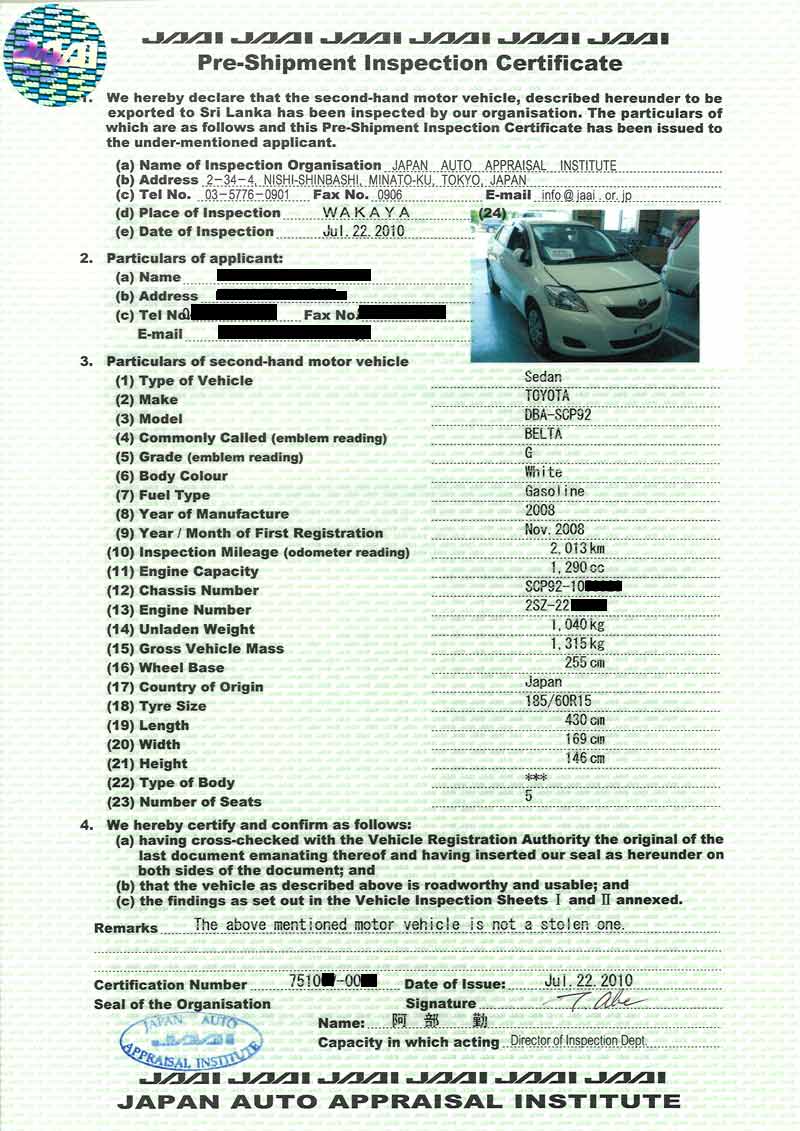
As a preventative measure against fraud or as a means of protecting the buyer against the possibility of receiving substandard or unwanted goods, survey or inspection certificates issued by a reputable third party may be deemed prudent.
Such certificates indicate that the goods have been examined and found to be as ordered.
Payment Procedure L/C
The payment procedure usually follows:
-
Payment
On presentation of the documents called for under the letter of credit, provided they comply with its terms, the advising/negotiating bank, in the case of an unconfirmed letter of credit, may pay/negotiate the draft.
In the case of a confirmed letter of credit, the confirming bank is obliged to honor the drawing without recourse to the beneficiary.
-
Reimbursement
The advising/confirming/negotiating bank will claim reimbursement from the issuing bank.
-
Settlement
On receipt of conforming documents, the issuing bank will also be responsible for checking documents and will charge the applicant’s account under the terms of the letter of the credit application and agreement forms, effecting reimbursement to the negotiating bank.
What to Do if Documents are Dishonored?
When documents are presented by the beneficiary and are found not to be under the terms of the letter of credit, the following courses of action are available:
Alternative 1:
The documents may be corrected if possible.
However, this option is only applicable if the discrepancies are such that the beneficiary, shipping company or whoever is concerned can correct the discrepancies before the expiry of the letter of credit and within the period allowed for presentation of the documents.
Alternative 2:
If the discrepancies cannot be corrected, the beneficiary’s bank may request authority from the issuing bank to negotiate the draft, despite the discrepancies.
Alternative 3:
If in the case of a sight draft, the beneficiary wishes to receive the proceeds of the drawing immediately, then an indemnity may be the expedient method.
Under the indemnity, the beneficiary agrees to indemnify the negotiating bank for payment of principal, interest and any other loss resulting from the refusal of the issuing bank to honor the drawing due to non-conformity of the documents.
If the discrepancies are considered minor, the beneficiary’s bank may be prepared to negotiate the draft “under reserve”; it is understood the beneficiary’s bank will have recourse to the beneficiary if the discrepancies are unacceptable to the issuing bank.
Alternative 4:
As a last resort, documents may be sent to the issuing bank on an “approval” basis; the documents to be delivered to the buyer only against the buyer’s authority to pay or accept.
Common Problems with Letters of Credit
Most problems result from the seller’s inability to fulfill the obligations stated in the letter of credit. The seller may find these terms difficult or impossible to fulfill and, either try to fulfill them and fails or asks the buyer to amend to the letter of credit.
As most letters of credit are irrevocable, amendments may at times be difficult since both the buyer and the seller must agree.
Sellers may have one or more of the following problems:
- The shipment schedule cannot be met;
- The stipulations concerning freight costs are unacceptable;
- The price becomes too low due to exchange rates fluctuations;
- The quantity of product ordered is not the expected amount;
- The description of the product is either insufficient or too detailed; and,
- The stipulated documents are difficult or impossible to obtain.
Even when sellers accept the terms of a letter of credit, problems often arise late in the process. When this occurs, the buyer’s and seller’s banks will try to negotiate any differences.
In some cases, the seller can correct the documents and present them within the time specified in the letter of credit.
If the documents cannot be corrected, the advising bank will ask the issuing bank to accept the documents despite the discrepancies found.
It is important to note that, if the documents are not in accord with the specifications of the letter of credit, the buyer’s issuing bank is no longer obligated to pay.
